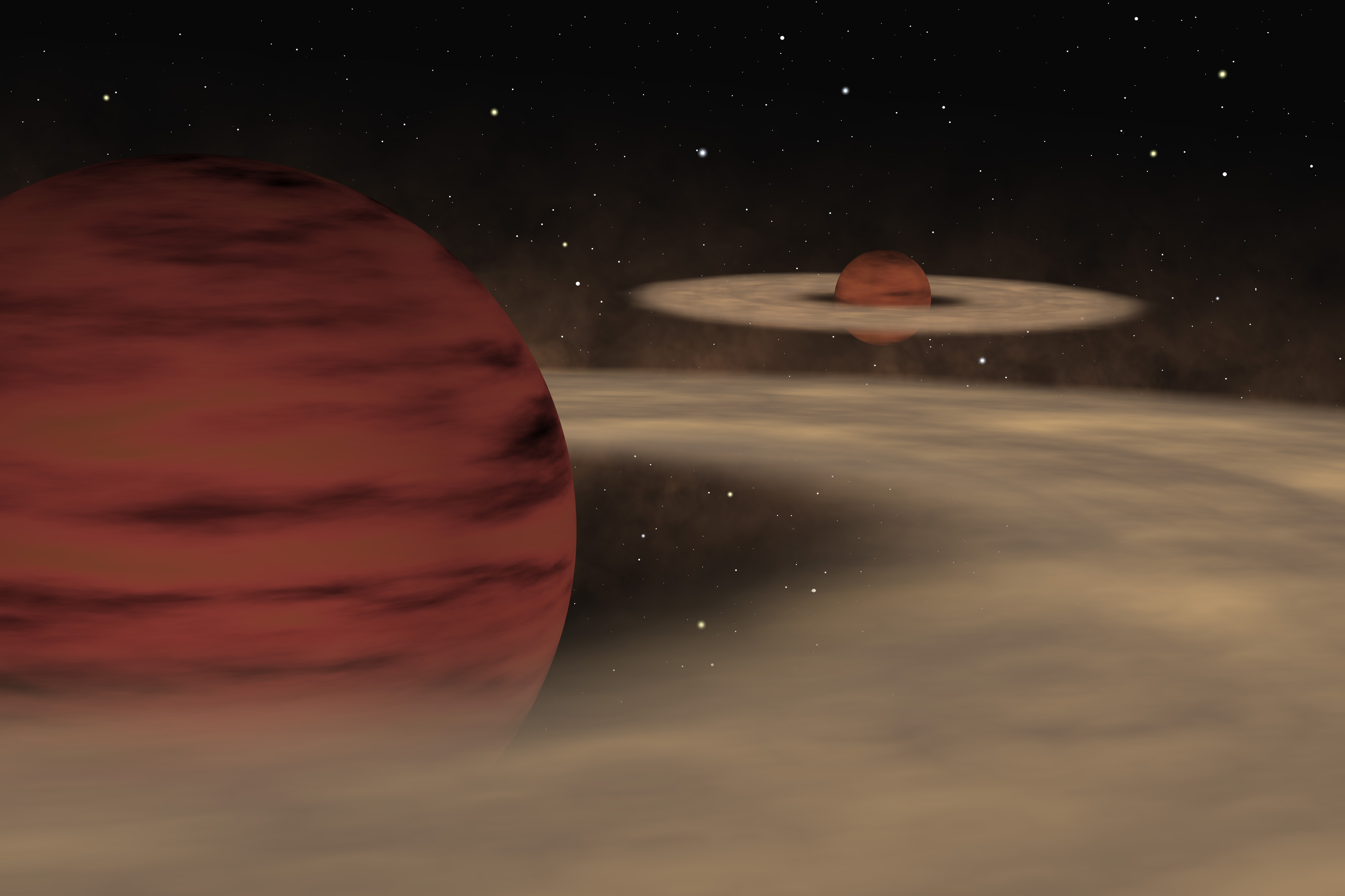Oph 162225-240515 on:
[Wikipedia]
[Google]
[Amazon]
Oph 162225-240515, often abbreviated Oph 1622, and also known as Oph 11, is a pair of  The distance between the two is approximately 240 AU—a distance so great that
The distance between the two is approximately 240 AU—a distance so great that
brown dwarf
Brown dwarfs (also called failed stars) are substellar objects that are not massive enough to sustain nuclear fusion of ordinary hydrogen ( 1H) into helium in their cores, unlike a main-sequence star. Instead, they have a mass between the most ...
s that have been reported as orbiting each other. The bodies are located in the constellation Scorpius
Scorpius is a zodiac constellation located in the Southern celestial hemisphere, where it sits near the center of the Milky Way, between Libra to the west and Sagittarius to the east. Scorpius is an ancient constellation that pre-dates the Gr ...
and are about 400 light years away. Mass estimates of the two objects are uncertain, but they are probably each higher than the brown-dwarf/planet
A planet is a large, rounded astronomical body that is neither a star nor its remnant. The best available theory of planet formation is the nebular hypothesis, which posits that an interstellar cloud collapses out of a nebula to create a you ...
dividing line of 13 Jupiter
Jupiter is the fifth planet from the Sun and the largest in the Solar System. It is a gas giant with a mass more than two and a half times that of all the other planets in the Solar System combined, but slightly less than one-thousandth t ...
masses. Oph1622B is located 1.94 arcseconds from Oph1622A, at a position angle
In astronomy, position angle (usually abbreviated PA) is the convention for measuring angles on the sky. The International Astronomical Union defines it as the angle measured relative to the north celestial pole (NCP), turning positive into the ...
of 182°.
The discovery of the pair was announced in a 2006 Science article by Ray Jayawardhana and Valentin D. Ivanov
. The objects were discovered using telescopes of the European Southern Observatory's New Technology Telescope
The New Technology Telescope or NTT is a 3.58-metre Ritchey–Chrétien telescope operated by the European Southern Observatory. It began operations in 1989. It is located in Chile at the La Silla Observatory and was an early pioneer in the use ...
in La Silla, Chile
Chile, officially the Republic of Chile, is a country in the western part of South America. It is the southernmost country in the world, and the closest to Antarctica, occupying a long and narrow strip of land between the Andes to the east a ...
. The masses were originally reported to be lower, at 14 and 7 Jupiter masses, which would have made the smaller object a planetary-mass object, or planemo
A planetary-mass object (PMO), planemo, or planetary body is by geophysical definition of celestial objects any celestial object massive enough to achieve hydrostatic equilibrium (to be rounded under its own gravity), but not enough to sustain ...
. The system was announced as the first reported binary system of objects this small. However, later observations and calculations have revised the masses upward. Close et al. estimate the mass of the primary, designated Oph1622A as 12–21 times that of Jupiter and 9–20 Jupiter masses for the less massive Oph1622B, while Luhman et al. assign values of 57 and 20 Jupiter masses. Despite the acronym "Oph" appearing in its name (implying that it may belong to the young Ophiuchus molecular cloud), Oph1622 is likely to be older than its originally adopted age of 1 million years. More likely, it is a member of the Upper Scorpius subgroup of the Scorpius–Centaurus association, which has an age of 11 million years. For an adopted age of 11 million years, the system has inferred masses of 53 and 21 Jupiter masses, similar to that derived by Luhman et al.
 The distance between the two is approximately 240 AU—a distance so great that
The distance between the two is approximately 240 AU—a distance so great that Space.com
Space.com is an online publication focused on space exploration, astronomy, skywatching and entertainment, with editorial teams based in the United States and United Kingdom. The website offers live coverage of space missions, astronomical discov ...
wrote that "their connection is so tenuous ... that a passing star or brown dwarf could permanently separate the two objects." As such, the discovery was reported as casting doubt on the theory that such free-floating planet-like objects have been ejected from a stellar system
A star system or stellar system is a small number of stars that orbit each other, bound by gravitational attraction. A large group of stars bound by gravitation is generally called a ''star cluster'' or ''galaxy'', although, broadly speaking, ...
, such an event being too violent to leave them in such a wide orbit around each other. Given their wide separation and high masses, the system is best thought of as a wide brown dwarf binary rather than a binary planetary system.
See also
* 2M1101AB *UScoCTIO 108
UScoCTIO 108 is a binary system, approximately 470 light-years away in the Upper Scorpius (USco) OB association. The primary, UScoCTIO 108A, with mass around 0.06 solar masses, is a brown dwarf or low-mass red dwarf. The second ...
* SDSS J1416+1348
* Binary brown dwarfs
References
External links
* https://www.sciencedaily.com/releases/2006/08/060804084105.htm * http://www.spacedaily.com/reports/Astronomers_Discover_Twin_Planemos_999.html * http://www.space.com/scienceastronomy/060803_planemo_twins.html * http://news.bbc.co.uk/1/hi/sci/tech/5241774.stm Scorpius (constellation) Brown dwarfs Upper Scorpius {{Multi-star-stub